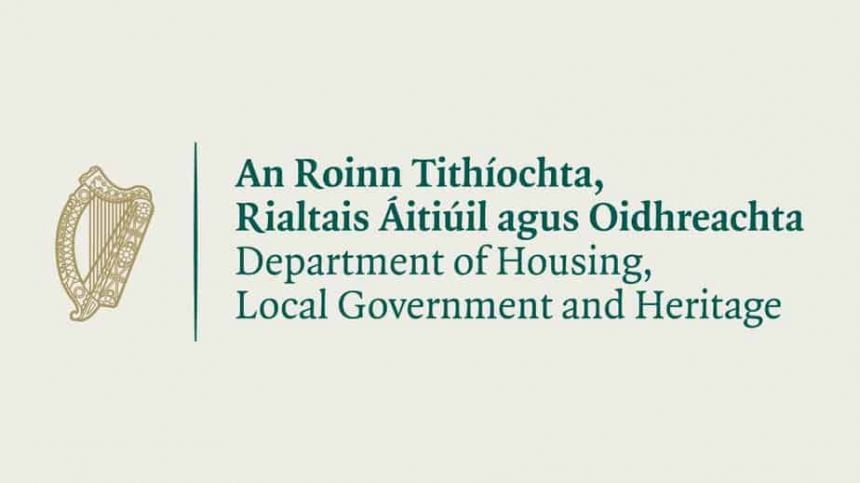Galway Bay FM Newsroom - The Minister for Housing, Local Government and Heritage Darragh O’Brien TD, and the Minister of State with responsibility for Heritage and Electoral Reform, Malcolm Noonan TD, have today encouraged Galway people to give their views on water quality through a number of open meetings to be held around the country as part of the public consultation on the draft River Basin Management Plan.
The consultation is currently open and members of the public or interested parties can make submissions online (until March 31st) at www.gov.ie/draftRBMP or through the Local Authorities Water Programme (LAWPRO) at https://consult.watersandcommunities.ie/en/content/draft-river-basin-management-plan-ireland-2022-2027 .
62 consultation meetings will be held throughout the country over the next month, beginning with Carlow, Cavan, Clare and Cork on February 15th with the Galway meetings scheduled for Tuesday the 22nd of February, Thursday the 24th of February, Tuesday the 1st of March and Tuesday the 8th of March.
The meetings for Galway residents will take place on these days and times:
| Oranmore, Clarinbridge, Kinvara, Loughrea, Gort | Thursday 24th February 2022 | 7.30pm |
| Galway City, Oughterard, Maam Valley, Cornamona, Clonbur, Headford, Tuam & Claregalway | Tuesday 22nd February 2022 | 7.30pm |
| Barna, Furbo, Spiddal, Indreabhan, Rossaveel, Carraroe, Lettermullan, Lettermore, Carna, Rosmuck, Cashla, Roundstone, Ballyconnelly, Clifden, Letterfrack, Leenaun, Receess, Inagh ValleyBarna, Spiddle, Inveran, Carraroe, Roundstone, Ballyconnelly, Clifden, Letterfrack, Leenaun, Receess, Inagh Valley | Tuesday 1st March 2022 | 7.30pm |
| Abbey, Ahascragh, Aughrim, Ballinasloe, Ballygar, Ballymoe, Mountbellew , Woodford, Willamstown Portumna, Taghmaconnel, Athlone (West) | Tuesday 8th March 2022 | 7.30pm |
A full list of meetings and information on how to register can be found here https://lawaters.ie/rbmp-public-meetings-2022/.
The public meetings will be complemented by a new Department of Housing, Local Government and Heritage digital campaign to generate as much participation as possible.
The draft River Basin Management Plan sets out an increased ambition for how water quality is managed in Ireland. There are 4842 water bodies in Ireland, organised in 46 catchment areas and 54 % of all waterbodies are considered to be at risk of not meeting Water Framework Directive objectives by 2027. A number of pressures are impacting water quality including agriculture, hydromorphology (physical changes), urbanisation and waste water treatment. The draft Plan also takes account of the impacts of climate change on our water and biodiversity.
Minister O’Brien said:
“We all recognise the pressures and risks to our water and the draft River Basin Management Plan sets out ambitious plans to make improvements to our water quality. We recognise that more needs to be done, as a matter of urgency. Extensive engagement on this plan is already underway with stakeholders and I am asking the public to make their views count on this important issue.
Through our digital campaign and in public meetings, we’re asking the public to think about water and how it is used in their daily lives and recreation, but also its role in sustaining communities and in the face of climate change. I’m hoping for a great response to this public consultation and encourage people to get involved either through the LAWPRO local approach or the Department’s at www.gov.ie/draftRBMP.”
Minister of State Noonan added, “By getting involved, members of the public will be helping to shape the overall management of Ireland’s rivers, lakes and streams. In recent years, we have made substantial progress in how we manage our water services and how we work together to protect and improve water quality, but challenges remain and we have much more to do. By working together, we can develop a pathway to achieve our environmental objectives and deliver the clean waters and healthy freshwater ecosystems that are vital for protecting public health, supporting economic growth and restoring aquatic biodiversity.”







